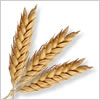 USA: Wet weather causes new preharvest sprouting concerns in 2025 malting barley crop
USA: Wet weather causes new preharvest sprouting concerns in 2025 malting barley crop
Wet weather hit some barley fields just before harvest this year, causing new preharvest sprouting (PHS) concerns in the 2025 U.S. malting barley crop. The National Barley Growers Association (NBGA) has recently published a report noting the biggest impact appears to be in Montana.
“North Central Montana, a primary malt barley growing region, has once again received rains prior to the harvest of the 2025 barley crop, resulting in PHS. There have been pockets of sprout damage in other regions as well,” Mitch Konen, Montana barley grower and President of the National Barley Growers Association, said.
Preharvest sprouting occurs when mature barley kernels start germinating in the field before harvest, usually after late-season rain. Once the germination process begins, enzymes activate inside the grain, breaking down starch and protein that maltsters and brewers depend on for predictable performance. Sprouted kernels often lose viability, leading to uneven germination during malting. That can cause inconsistent malt modification, low extract yield and poor fermentability in the brewhouse. Even mild sprout damage can trigger storage problems or quality losses over time.
According to the NBGA, growers are seeing bigger differences between official grading and private buyer results than in past years. That inconsistency stems from two testing methods used to evaluate sprouting: Sprout Damage and Injured by Sprout. The USDA’s Federal Grain Inspection Service (FGIS) approves both tests, but results can vary widely. The “Sprout Damage” method is a simple visual inspection, while “Injured by Sprout” involves lightly pearling the barley and checking for embryo loss. Using both tests provides a fuller picture of possible PHS.
“If a grower or elevator is submitting samples for grading and suspect there may be a sprouting issue, they are encouraged to request the sample be examined for Injured by Sprout,” Scott Heisel, President of the American Malting Barley Association (AMBA), said.
Barley buyers ultimately decide if sprouting makes a crop unsuitable for malting. Maltsters look for grain with high germinative energy and consistent enzyme potential. Barley that has even slight PHS may require careful storage or conditioning to prevent further degradation before malting. Craft brewers relying on domestic malt may notice minor shifts in malt availability or specifications this winter if regional quality issues persist.
Regresar





